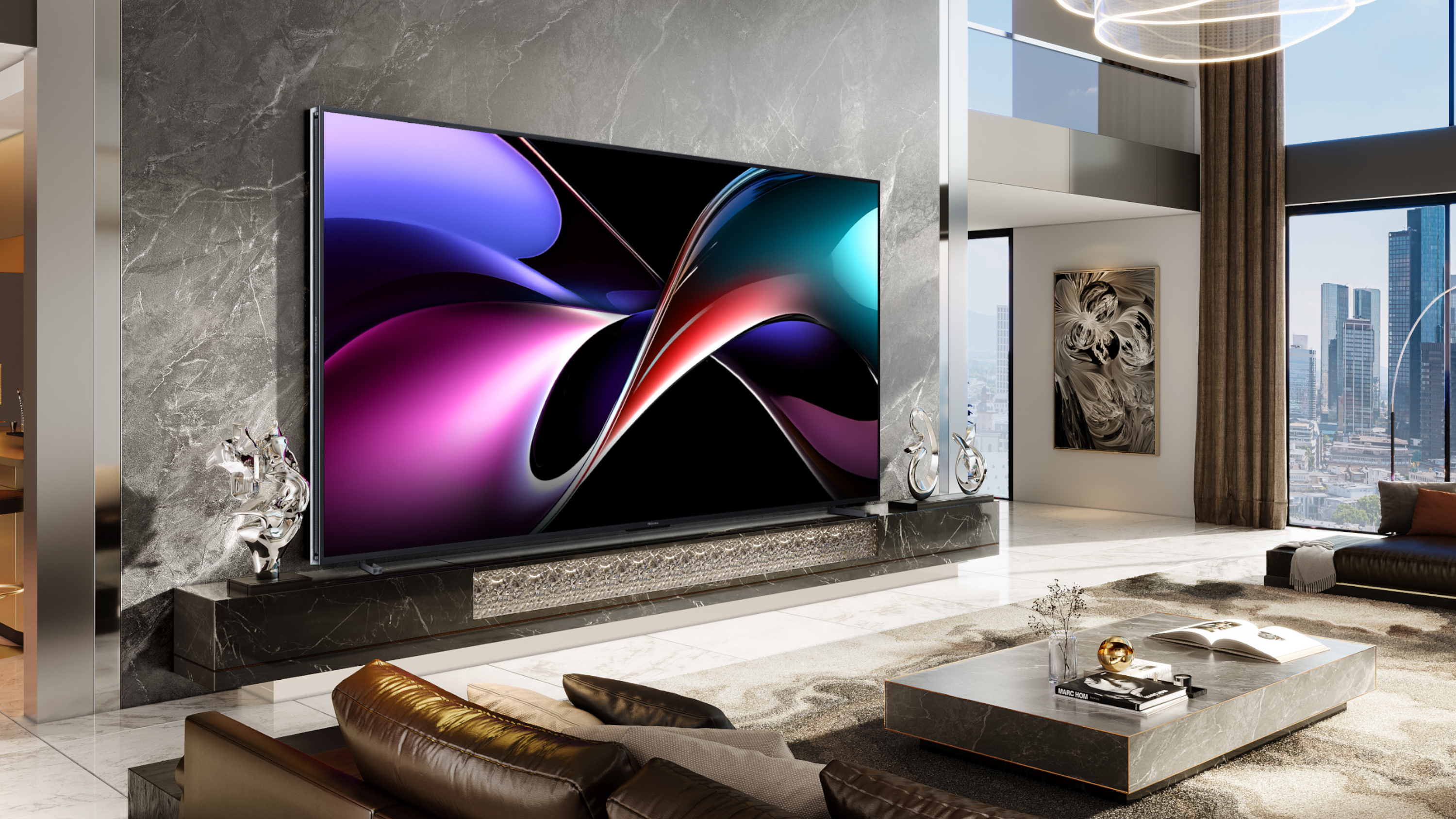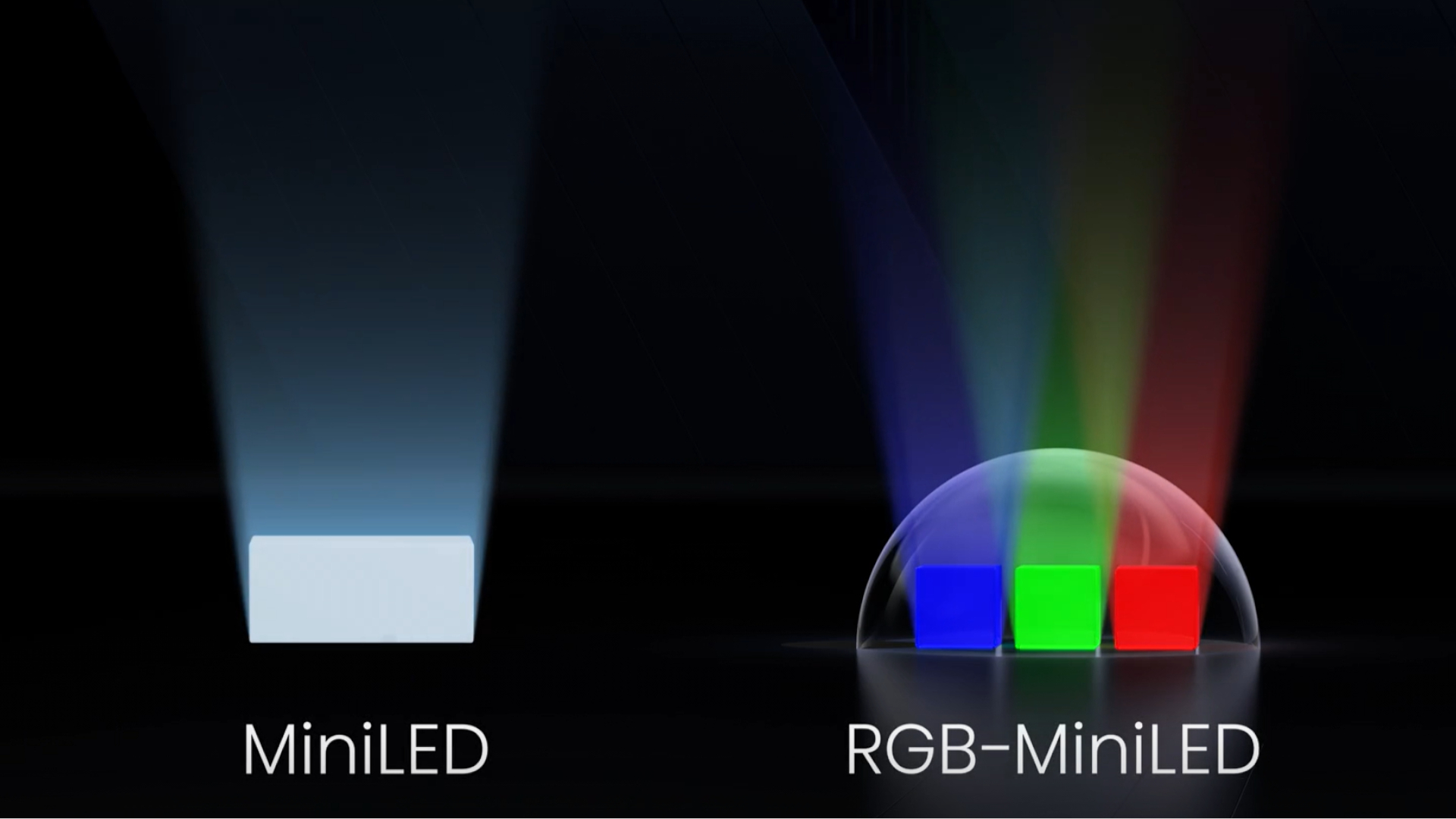This 116-inch RGB Mini-LED TV just went on sale — and it's the brightest we've ever tested
You might want to sit down for its price

Grab your shades and get your finances in order, because Hisense just made available the brightest TV we’ve ever tested. It’s a 116-inch beast with a brand-new display type, and it’ll set you back a whopping $29,999.
The announcement comes just a day after the official launch of Samsung’s first Micro RGB TV — a 115-inch, $29,999 set that leverages a similar type of display technology.
In other words, the competition is heating up.

Originally unveiled at CES 2025, the Hisense 116UX launches alongside a slightly smaller (but still huge) 100-inch version, the Hisense 100UX, which carries a $19,999 price tag.
But what makes Hisense’s RGB Mini-LED technology worthy of this price tag? Among other benefits, its phenomenal brightness is at the top of the list.
I recently wrote at length about the Hisense 116UX brightness levels being off the charts, but here’s the basic gist: This TV packs better HDR highlight brightness than any commercially available TV we’ve measured to date.
The 116UX RGB Mini-LED exceeds the 5,000-nit mark.
While the brand’s more accessible Mini-LED flagship, the Hisense U8QG, delivers close to 4,000 nits of HDR highlight brightness, the 116UX RGB Mini-LED exceeds the 5,000-nit mark. That’s eye-popping brightness on a gargantuan screen.
Get instant access to breaking news, the hottest reviews, great deals and helpful tips.
As mentioned, Hisense’s RGB Mini-LED technology brings benefits beyond bonkers brightness. Unlike traditional Mini-LED backlights, Hisense’s RGB Mini-LED display tech consists of red-, green- and blue-colored LEDs. This allows for more precise color control.
The best brightness with largest color volume to boot
Testing bears this out, too. According to our measurements, the Hisense 116UX covers a remarkable 91.14% of the BT.2020 color gamut. That’s the best color volume we’ve seen this year, surpassing the most colorful OLED we’ve tested, the Samsung S95F.
We’ve not yet tested the slightly smaller-sized Hisense 100UX, but given that it leverages RGB Mini-LEDs as well, I’d have to imagine that its test results are, at the very least, in the 116UX’s ballpark.
Given the sky-high price point of both TVs, Hisense's new RGB Mini-LED technology is certainly not for everyone. The good news is that the next-best thing might be staring you in the face.
The aforementioned Hisense U8QG is still working with the traditional blend of quantum dots and traditional Mini-LEDs, but it’s the brightest TV we’ve tested this year in that class. It’s also available in all of the most popular size options — not just 100- and 116-inches.
The U8QG isn't quite as bright and colorful as a Hisense RGB Mini-LED TV, but it's still the brightest TV in its class. It also comes with the excellent Google TV smart platform, not to mention a ton of valuable gaming features. Right now, it's on sale for over $600 off.
If you’ve got the means and you’re interested in shelling out for the real deal, the Hisense 116UX is available at Best Buy for $24,999. (Hey, that’s $5,000 off!)
These TVs might be exorbitantly expensive for the time being, but many people — myself included — see these sets as the bridge between the TVs of today and the TVs of the future.
Follow Tom's Guide on Google News to get our up-to-date news, how-tos, and reviews in your feeds. Make sure to click the Follow button.
More from Tom's Guide

Michael Desjardin is a Senior Editor for TVs at Tom's Guide. He's been testing and tinkering with TVs professionally for over a decade, previously for Reviewed and USA Today. Michael graduated from Emerson College where he studied media production and screenwriting. He loves cooking, zoning out to ambient music, and getting way too invested in the Red Sox. He considers himself living proof that TV doesn't necessarily rot your brain.
You must confirm your public display name before commenting
Please logout and then login again, you will then be prompted to enter your display name.

